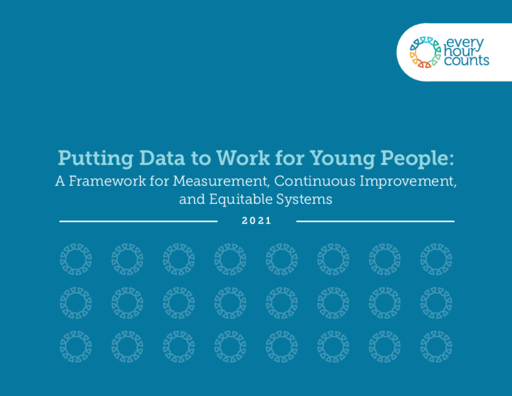
Breadcrumb
- Wallace
- Reports
- Putting Data To Work For Young P...
Putting Data to Work for Young People
A Framework for Measurement, Continuous Improvement, and Equitable Systems

Summary
How we did this
Researchers evaluated the experiences of three out-of-school-time systems that used a particular framework to assess their efforts. The framework authors drew on the research findings to produce an updated framework to help out-of-school-time systems collect and analyze information to make sound decisions.
Many communities nationwide have formed systems that coordinate afterschool, summer, and other out-of-school-time (OST) programming.
The nonprofit “intermediary” organizations that oversee these systems take care of many functions. One of the most critical involves using accurate information to make sound decisions.
But getting the most out of that information requires collecting and using the right data in the right way. This report presents an updated framework to help OST intermediary and similar organizations do just that.
A Revised, Research-Driven Framework
In 2014, Every Hour Counts, a national coalition of intermediaries that seeks to increase access to high-quality learning opportunities, released a framework to help OST systems identify a common set of systemwide outcomes and measure progress toward achieving them. Subsequent research by the RAND Corp. focused on how three intermediaries—Boston After School & Beyond, the Providence After School Alliance, and Sprockets, based in St. Paul—put the framework to use. The findings informed the updated framework presented here.
Outcomes
The heart of the framework is 11 desired outcomes of OST systems' work. Depending on local needs and circumstances, system leaders can assess their efforts toward achieving some or all of these outcomes.
The outcomes fall into three categories:
System-level. Five are directly related to overall system-level work. They relate to elements needed to improve program quality, scale, and sustainability—for example, whether a common goal for afterschool programming has been established.
Program-level. Three involve the efforts of programs to build high-quality expanded learning programs. That includes such steps as using apt management practices.
Youth-level. Three are related to young people, such as the rate of youth participation in programs and whether program participants develop positive skills and beliefs.
For each of the 11 outcomes, the tool includes several components, including:
- Indicators signaling progress being made
- The type of data that can be collected to track the indicators
- Ideas for working with the data
- Ways to interpret and use the findings
There’s also a set of racial equity questions for each outcome. They explore matters ranging from whether system decision-making is inclusive to whether programs distribute high-quality offerings equitably.
Key Takeaways
- This updated framework helps out-of-school-time (OST) intermediary organizations collect and use the right data in the right way to make sound decisions.
- The report presents an updated framework to help OST intermediary organizations measure progress made toward achieving a common set of outcomes.
- A set of racial equity questions for each outcome explores matters ranging from whether system decision-making is inclusive to whether programs distribute high-quality offerings equitably.
Visualizations


